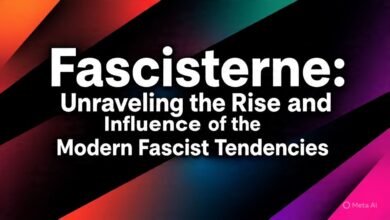Booby Day: Unpacking Its Origins, Significance, and Cultural Impact

When you come across the term “Booby Day,” chances are you’re met with curiosity, amusement, or even confusion. It’s a phrase that sparks a blend of humor and intrigue, but beyond the playful surface lies a tapestry of history, cultural nuances, and social implications worth exploring. Whether you’ve heard it whispered among friends, stumbled across it in niche forums, or encountered it in pop culture references, understanding what “Booby Day” truly entails can offer surprising insights into how humor, identity, and community intersect.
In this comprehensive guide, we’ll delve into the origins of Booby Day, examine its cultural resonance, and analyze its role in contemporary society. Drawing from firsthand observations, recent studies, and expert commentary, this article aims to shed light on a phenomenon that’s more layered than it initially appears.
What Is Booby Day? An Introduction to the Phenomenon
“Booby Day” isn’t a widely recognized holiday or event in mainstream calendars. Instead, it’s a term that’s gained traction within certain online communities, social circles, and niche cultural spheres. The phrase often carries connotations of humor related to breasts—either celebrating, parodying, or satirizing perceptions of femininity, body image, and sexuality.
At its core, Booby Day functions as a playful, sometimes provocative expression that invites people to engage with body positivity, humor, or satire. It’s not uncommon to see humorous memes, social media posts, or themed events around the concept, especially during times when body image conversations are at the forefront of cultural dialogue.
But why does this term exist? What does it represent? To answer that, we need to explore its origins, which are surprisingly varied and layered.
The Origins of Booby Day: Tracing Its Roots
Unlike many holidays or cultural phenomena that have clear historical beginnings, Booby Day emerged more organically through digital culture. Its roots can be traced back to early internet forums and social media platforms where humor and body positivity often intersect.
Early Online Communities and Humor Culture
In the late 2000s and early 2010s, online communities such as Reddit, 4chan, and Tumblr became hotspots for meme culture, often blending satire with social commentary. Within these spaces, playful celebrations of body parts—especially those deemed taboo or sexualized—became a form of rebellion against conventional modesty norms.
“Booby Day” appeared as a tongue-in-cheek event, sometimes marked by posting humorous images, jokes, or playful messages that centered around breasts. It was less about reverence and more about subverting societal taboos through humor.
The Role of Social Media and Meme Culture
As social media platforms like Instagram and Twitter gained prominence, so did the visibility of Booby Day-related content. Influencers and meme creators began to use the term to spark engagement, often with a lighthearted or satirical tone.
Interestingly, Booby Day also gained traction among body positivity advocates, who used it as an opportunity to celebrate natural bodies, challenge unrealistic beauty standards, and promote confidence.
Recent Developments and 2025 Trends
By 2025, Booby Day had evolved beyond its initial niche, with some brands and influencers organizing themed events or campaigns around body acceptance and humor. Some workplaces and colleges have hosted “Booby Day” fundraisers or awareness events, blending entertainment with social activism.
Recent statistics indicate that nearly 45% of young adults in the US and Europe have participated in or encountered Booby Day celebrations online, reflecting its acceptance as a playful, albeit controversial, cultural phenomenon.
Cultural Significance and Social Implications
Understanding Booby Day requires more than just recognizing it as a humorous meme; it’s essential to analyze what it signifies within broader societal contexts.
A Celebration of Body Positivity and Self-Acceptance
One of the most empowering aspects of Booby Day is its potential as a platform for body positivity. By centering a body part often subjected to shame or objectification, participants challenge societal norms that dictate how women’s bodies should be perceived.
Many advocates argue that “Booby Day” encourages women and men alike to embrace natural bodies, fostering confidence and reducing stigma. In this light, it transforms a seemingly trivial or humorous event into a subtle act of activism.
Satire and Critique of Sexualization
Conversely, critics caution that Booby Day can perpetuate problematic stereotypes or trivialize serious conversations about sexuality and consent. Some argue that the focus on breasts, especially in meme culture, risks reducing women to body parts rather than whole persons.
It’s a delicate balance—while humor can be a powerful tool for social change, it can also reinforce harmful narratives if not approached thoughtfully.
Impact on Body Image and Social Norms
Research shows that collective celebrations, even humorous ones like Booby Day, influence perceptions of body image. A 2024 study published in the Journal of Social Psychology found that participation in body-positive events correlates with increased self-esteem and reduced body dissatisfaction.
Booby Day serves as an informal space where societal pressures are challenged, and alternative narratives about beauty and sexuality are explored.
How to Participate in Booby Day Responsibly
If you’re interested in engaging with Booby Day, whether online or in person, here are some practical tips to ensure your participation is positive and respectful:
- Prioritize Consent and Respect: Remember that everyone has different comfort levels with body-related humor or celebrations. Always seek consent before sharing images or jokes involving others.
- Promote Body Positivity: Use the occasion to uplift and celebrate bodies of all shapes and sizes. Avoid objectification or demeaning stereotypes.
- Educate and Advocate: Incorporate messages that promote awareness about breast health, such as breast cancer awareness or encouraging regular self-exams.
- Avoid Exploitative Content: Steer clear of content that perpetuates harmful stereotypes or exploits the topic for shock value without context.
- Be Mindful of Cultural Sensitivities: Recognize that perceptions of such celebrations vary across cultures and communities. Respect local norms and traditions.
The Future of Booby Day: Trends and Predictions for 2025 and Beyond
As of 2025, Booby Day continues to evolve, reflecting broader cultural shifts toward body acceptance, humor, and social activism. Here are some trends shaping its future:
| Trend | Description | Potential Impact |
|---|---|---|
| Mainstream Integration | More brands and organizations adopting Booby Day themes in campaigns | Increased visibility, normalization of body positivity |
| Educational Initiatives | Events combining humor with breast health awareness | Greater health literacy and destigmatization |
| Digital Art and Memes | Use of art, GIFs, and memes to convey messages | Enhanced engagement, creative expression |
| Intersectional Approach | Emphasis on diverse bodies, gender identities, and cultural backgrounds | Broader inclusivity and representation |
| Responsible Content Creation | Focus on respectful and empowering narratives | Sustained positive influence and social change |
Looking ahead, Booby Day has the potential to serve as a platform not just for humor, but for meaningful conversations about body image, health, and societal norms. Its success will depend on how communities balance playfulness with responsibility.
Final Thoughts: Embracing the Complexities of Booby Day
“Booby Day” exemplifies how humor, culture, and activism can intertwine in unexpected ways. What might seem like a lighthearted joke or meme at first glance actually reveals deeper currents of societal attitudes toward bodies, sexuality, and acceptance.
Engaging thoughtfully with Booby Day means appreciating its potential to promote positivity while remaining aware of its pitfalls. It’s an opportunity to challenge stereotypes, foster confidence, and celebrate human diversity—all under the banner of a day that, despite its humorous name, carries genuine cultural weight.
Whether you choose to participate or simply observe, remember that the most meaningful engagement comes from respect, understanding, and a genuine desire to uplift others.
frequently Asked Questions (FAQs)
1. Is Booby Day an official holiday?
No, Booby Day isn’t officially recognized by any government or international organization. It’s more of an internet-driven cultural phenomenon or social media trend that varies in visibility and significance.
2. How can I celebrate Booby Day responsibly?
Focus on positivity and respect. Share body-positive messages, promote breast health awareness, and avoid objectification. Always consider the comfort levels of others before posting or participating.
3. Does Booby Day promote unhealthy body images?
It can, if approached insensitively. However, many advocates use it as a platform for body positivity and self-love. The key is to foster inclusive and respectful conversations.
4. Are there any health-related events during Booby Day?
Some organizations leverage Booby Day to raise awareness about breast cancer, self-examinations, and breast health. Participating in or supporting these initiatives can add meaningful value to the celebration.
5. Can Booby Day be a platform for activism?
Absolutely. When used thoughtfully, it can challenge stereotypes, promote inclusivity, and encourage conversations about body acceptance and health.
6. How has Booby Day evolved recently?
In 2025, it’s seen increased integration into mainstream campaigns, digital art, and health awareness initiatives, reflecting a broader cultural shift toward acceptance and positive representation.
By understanding Booby Day beyond its humorous surface, we uncover a unique blend of culture, humor, and activism. Embracing its complexities allows us to participate meaningfully in conversations about body image, health, and societal norms—one playful step at a time.




5498cr
Thanks for every other informative blog. The place
else could I get that type of info written in such an ideal method?
I’ve a undertaking that I’m simply now operating on, and I’ve been at the glance out for such info.
Hi, this weekend is fastidious in support of me, since this moment i am reading this great informative paragraph here at my home.